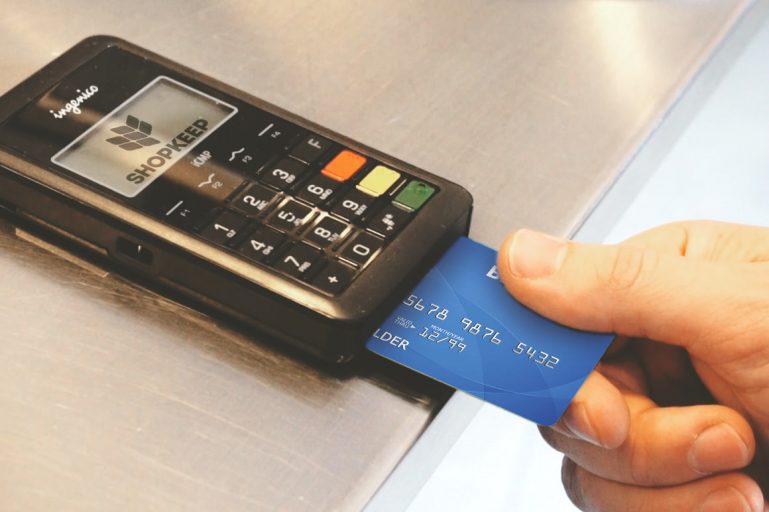
The EMV Shift: What You Need to Know Before October 1st
Re-terminalization refers to the process of businesses replacing their existing point of sale system with new technology and America is about to see a bigger wave of change than we’ve seen in many decades.
The cause of this change can be found in the burgeoning adoption of two payment technologies, EMV (EuroPay, MasterCard, Visa) and NFC (Near Field Communication). The interesting thing is that neither of these technologies are really new. In fact, while America has been slow on the uptake, EMV has been widely adopted across the globe for almost a decade and NFC has been ‘on the cusp’ of revolutionizing payments for years. Nevertheless, both of these technologies are almost certainly going to enjoy widespread adoption over the coming year.
A Little Background: What are Chip Cards and Why are they Better?
EMV, named for the three card companies that created it (Europay, MasterCard, Visa), is a technology that stores customer payment details in a card chip rather than on the magnetic stripe on the back of the card. It is deemed to be more secure than previous technologies because each time the chip is read, it presents a unique identifier. This is important as it drastically reduces the benefit of cloning that captured data.
There are two key players in the world of credit card fraudsters.
- The people who steal card details. This can be through a variety of means, including sophisticated malware attacks, so-called ‘rubberduckie’ attacks (where the hacker physically attaches a device to the POS system), or relatively basic techniques such as dumpster diving for discarded papers/cards.
- The people who then attempt to ‘monetize’ that stolen information. This usually involves someone printing stolen details on a new card and trying to use that in-store or online.
EMV makes life harder for both sets of players, but in particular, it takes away the ability for stolen data to be used more than once by third parties. There is currently a $15 billion black market in stolen credit card details and EMV is going to dramatically decrease the resale value of each stolen set of card details.
So, How is Visa ‘Encouraging’ this Change?
The world’s largest card issuer, Visa, has suggested a deadline of October 2015 for all U.S. merchants to start accepting EMV payment. And their ‘suggested’ deadline has a bite to it; any merchant (excluding fuel retailers) who has failed to invest in EMV deployment may be liable for counterfeit fraud losses. Where processors and card issuers were previously swallowing the fallout from credit card fraud, these losses will now be taken on by the merchants themselves. What’s more, Visa has committed to issuing in excess of 600,000,000 EMV cards to consumers in the coming year. So, merchants will soon be confronted with two very compelling reasons to upgrade their hardware. The first, a fraud liability shift that leaves non-switchers open to substantial risk. And the second, a growing number of security conscious consumers armed with chip cards they believe to be more secure and expect to be able to use. Visa has essentially drawn a line in the sand and declared that 2015 will be the year when EMV finally takes hold. Businesses will follow suit.
Mass consumer adoption will take some time. You could say that 2015 is going to be the beginning of the beginning for mobile payments, but the enormous hurdle of merchant adoption will soon be overcome. Businesses across the country are now waking up to the pressing need to invest in their point of sale systems, and are beginning to research the available hardware options. Hence, Apple’s perfect timing. As merchants look to implement EMV hardware, they will be confronted with a negligible extra cost to also implement NFC readers in their new system. It is this ‘perfect storm’ of EMV and NFC pressures that is going to lead to a landmark year for re-terminalization in 2015.
We’ve all been there. You wait forever for a bus to come, then all of a sudden, three of them come at once. That’s exactly what’s happening to payments technology in 2015. In addition to NFC and EMV, Walmart and other major retailers are looking to launch their own proprietary QR code-based payments system, CurrentC. The obvious question being, which of these technologies is going to win in the end?
Want to try ShopKeep for yourself?
Just answer a few easy questions.
Need help finding the right point of sale?
Just complete the form. We’ll call you right back to explain how ShopKeep can work for you.
Hit the ground running.Sprinting, in fact!
Read our free, comprehensive guide, Small Business 101, to learn all you need to know about starting a thriving business.

